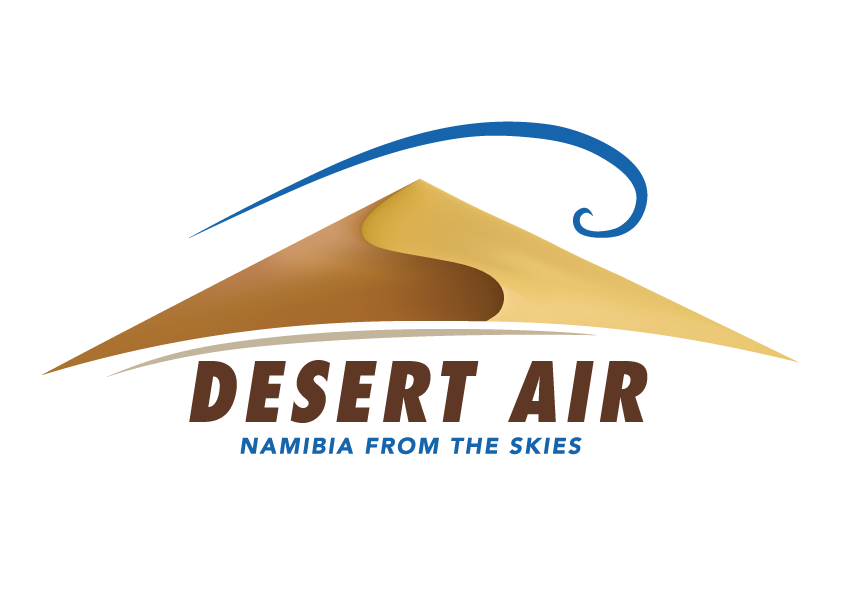




Namibia located on the western coast of Southern Africa and bordered by Angola to the north, Botswana to the east, South Africa to the south, and the Atlantic Ocean to the west. Other neighbouring countries include Zimbabwe and Zambia.
Namibia is certainly one of the most fascinating countries in Southern Africa
Namibia is the first country in the world to incorporate the protection of the environment into its constitution; some 14% of the land protected, include virtually the entire Namib Desert coastal strip.
When on safari through its unique landscapes, you can experience the vastness and solitude of Namibia, as well as the picturesque Kalahari, Namib Desert, Swakopmund, and Etosha National Park. Known for great hospitality, Namibia offers good value for money and excellent cuisine. It is an interesting and diverse travel destination combining the country’s German colonial history with wildlife, spectacular landscapes, and friendly people.
South Africa occupied the German colony of South-West Africa during World War I and administered it as a mandate under UN Trusteeship until after World War II, when it annexed the territory. On 19 April 1960, the South-West Africa People's Organisation (SWAPO) formed as a liberation movement, and in 1966 launched an armed liberation struggle for independence for the area that was renamed Namibia. It was not until 1988 that South Africa agreed to end its administration in accordance with a UN peace plan for Namibia. Namibia won its independence in 1990 under the supervision of the United Nations Transitional Assistance Group (UNTAG) and has been governed by SWAPO ever since.
824,269 km²
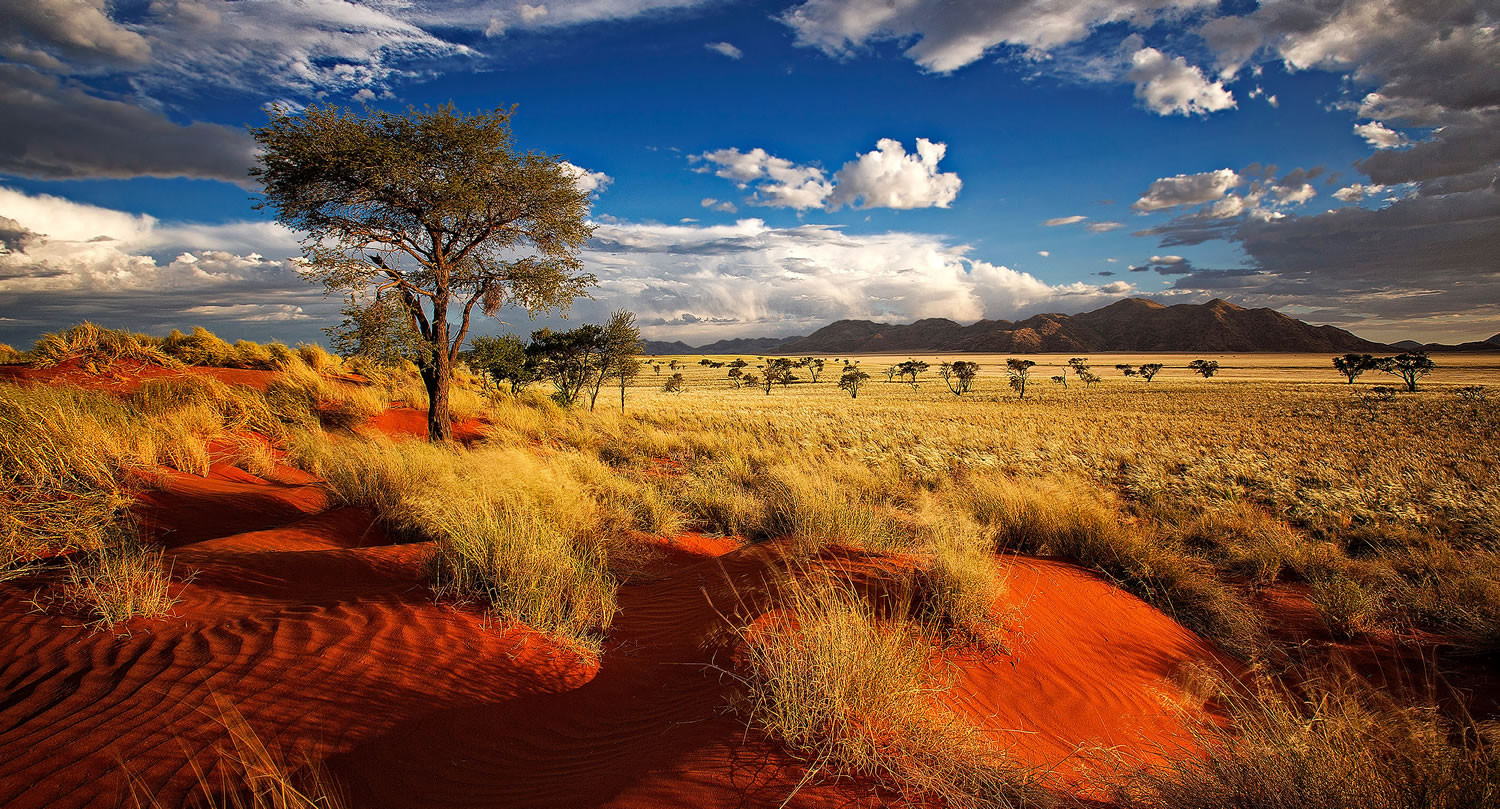
1572 km
The northeast parts are primarily arid, semi-arid, and sub-tropical. The hottest months are between January and February, with average maximum day temperatures ranging between 20ºC and 36ºC. During the winter months, the average temperatures range between 6ºC and 10ºC, with average day temperatures of between 18ºC and 22ºC.
With its surface area of 824 268 km, Namibia is a vast country, even by African standards.
Diamonds, copper, uranium, gold, lead, tin, lithium, cadmium, zinc, salt, hydropower, fish
Note: Suspected deposits of oil, coal, and iron ore.
The country has a population of 2.5 million; population density of 3 persons per km² making Namibia one of the lowest found in the world. It has an annual population growth of 3.1%, one of the highest in Africa.
Black 87.5%, white 6%, mixed 6.5%
Note: About 50% of the population belong to the Ovambo tribe and 9% to the Kavango tribe; other ethnic groups are Herero 7%, Damara 7%, Nama 5%, Caprivian 4%, Bushmen 3%, Baster 2%, and Tswana 0.5%
Christian 80% to 90% (Lutheran 50% at least), and indigenous beliefs 10% to 20%
English (official), Afrikaans common language of most of the population, German, and indigenous languages: Oshivambo, Herero, Damara-Nama.
Windhoek is Namibia's administrative, judicial and legislative capital. Other main towns include Oshakati, Walvis Bay, Swakopmund, Lüderitz, Tsumeb, Oranjemund, Rehoboth, Keetmanshoop, Rundu, Ondangwa, Grootfontein, Mariental, Otjiwarongo, Okahandja, Gobabis, and Katima Mulilo.
Namibian Dollar (N$) pegged 1:1 to the South African Rand
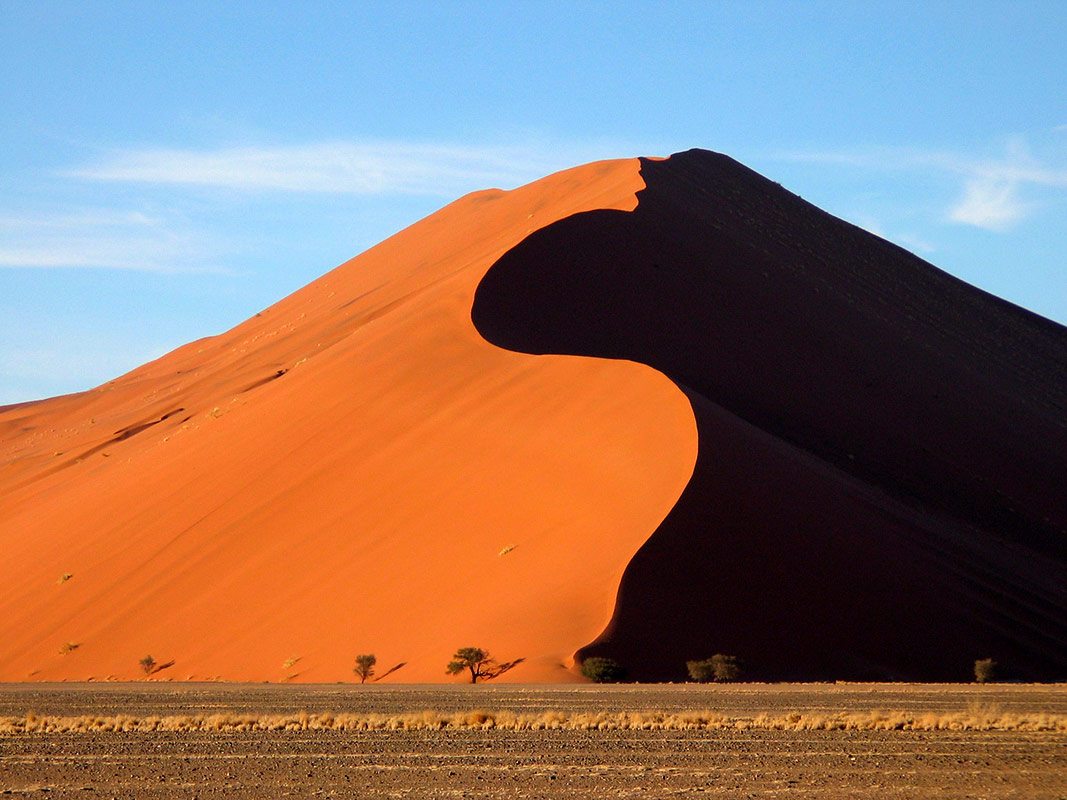
Public transport is NOT available to all tourist destinations in Namibia. There are bus services from Windhoek to Swakopmund as well as Cape Town/Johannesburg/Vic Falls. Namibia’s main railway line runs from the South African border, connecting Windhoek to Swakopmund in the west and Tsumeb in the north. There is an extensive network of international and regional flights from Windhoek and domestic charters to all destinations.
Most tap water is purified and safe to drink
Visitors should exercise caution in rural areas
GMT + 2 hours
220 volts AC, 50 Hz, with outlets for round three-pin type plugs
One medical doctor per 3,650 people
Four privately run hospitals in Windhoek with intensive-care units
Medical practitioners (world standard)
24-hour medical emergency services
Namibia has a well-known record for safety making it a fantastic destination for travellers. However, as petty crimes do occur, we urge you always to be on alert, like anywhere else in the world.
Due to the long distances, the cost of construction and maintenance, only Namibia’s main routes have a tarred surface. The roads are constantly maintained and currently in good condition. The general speed limits in Namibia are 60 km/h on a public road within an urban area (may be lifted to 80 km/h on some major urban roads) 120 km/h on every tarmac freeway.
Most roads in Namibia are non-tarmac (“gravel” roads); they vary from coarse gravel to fine sand and dust. Gravel roads vary from being in good condition to where the surfaces are potholed and corrugated despite the efforts of the roads authority to maintain them.
Namibia’s gravel roads are generally fine for normal, lower clearance 2WD vehicles but we recommend a 4WD with higher clearance for some of the main attractions where the road conditions require this. The maximum speed limit on gravel roads is 80 km/h. No gravel road is the same; according to the condition of the gravel road, adjust your speed, for safe travel.
For more information on self-drives refer to What we offer
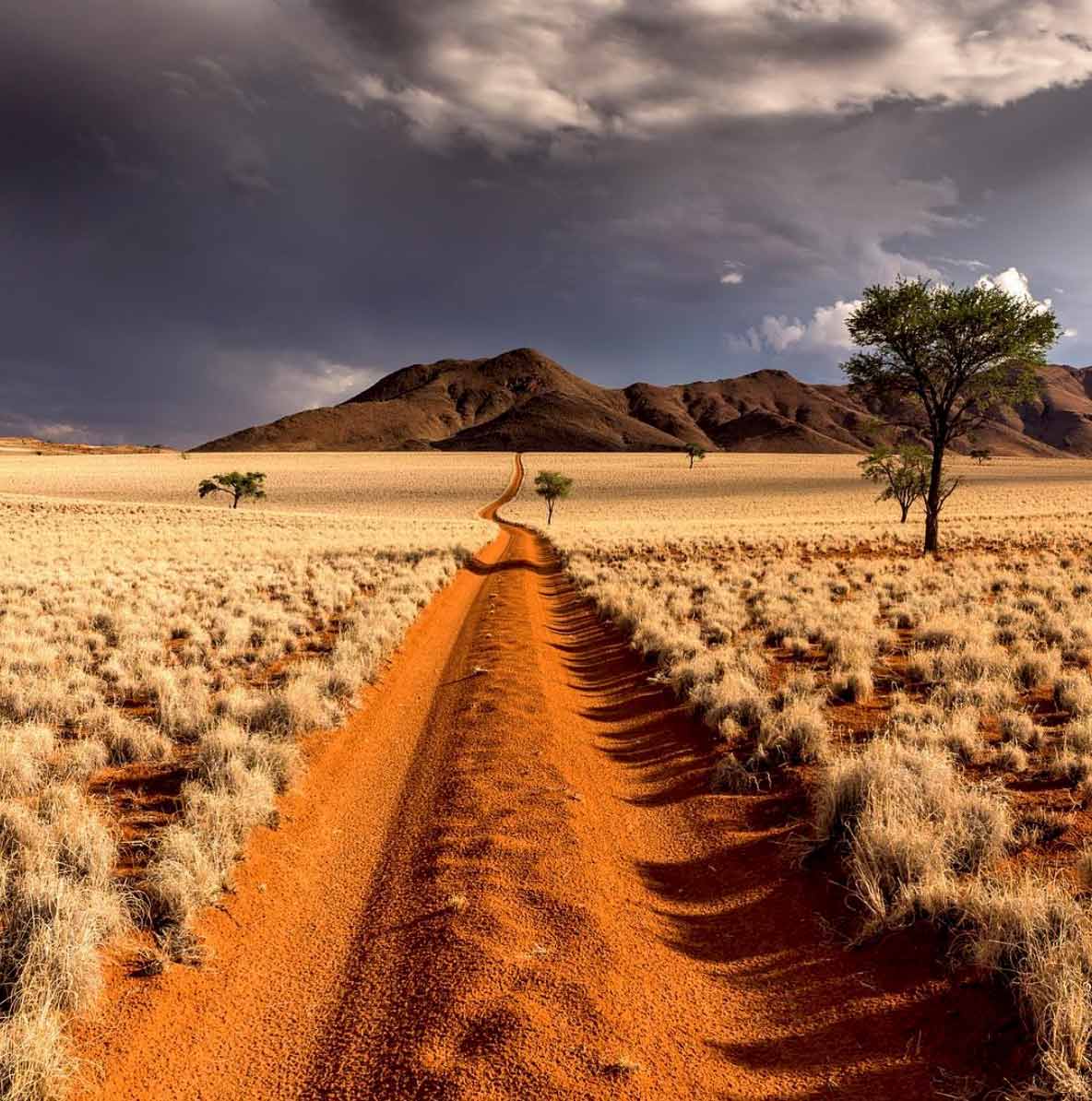
It is the responsibility of the visitor to check visa regulations with your local authorities as visitors from certain countries do require visas. Your passport must be valid for a minimum of 6 months. Upon arrival, a visa is issued. Tourists can stay in the country up to a maximum of 90 days if they present a return ticket.
Children under the age of 18 years should carry a valid passport. Parents travelling with children (under 18 years) should also carry the original or certified copy of the unabridged (full) birth certificate. Adults travelling with children where they are not the biological or legal guardians of those children should be in possession of a certified affidavit statement from the child’s parents giving consent for their travel. If a child is travelling with only one parent, the other parent should give consent for travel in the form of a certified affidavit.
It is advisable to take out travel and medical insurance prior to visiting Namibia. Medical services are generally of high standard in Namibia but are restricted to the main towns. Camps and lodges in Namibia have strict cancellation charges and travel insurance, is recommended to recover expenses in the event of unforeseen circumstances.
Namibia is not a Yellow Fever endemic country. A Yellow Fever vaccination certificate is only required if travelling from countries with a risk of yellow fever transmission.
The northern region above Etosha National Park as well as the Kavango and Zambezi is a malaria risk area. The risk of contracting malaria is highest during the summer rainy season (October to April).
Precautions:
Be wary of mosquitos, particularly in the early morning and early evening
Wear long-sleeved shirts, long trousers or slacks and socks
Use mosquito repellents obtained in Namibia
If doors and windows have screens, make sure that they are down
Most lodges in malaria areas will have mosquito nets
Nature reserves: 15% of surface area
Highest Mountain: Brandberg
Other Prominent Mountains: Spitzkoppe, Moltkeblick, Gamsberg
Perennial Rivers: Orange, Kunene, Okavango, Zambezi, and Kwando/Linyanti/Chobe
Ephemeral Rivers: Numerous, including Fish, Kuiseb, Swakop, and Ugab
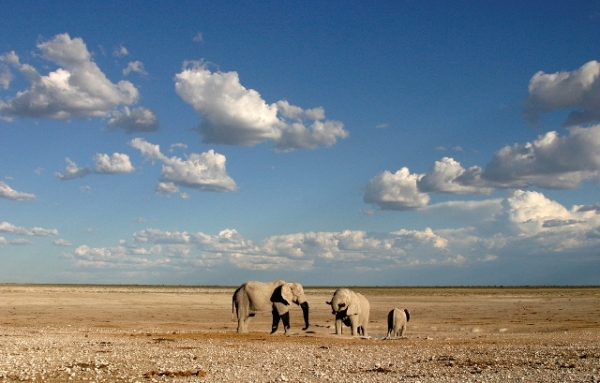
Despite its aridity, Namibia is full of fascinating wildlife. The national parks and concession areas protect their flora and fauna effectively and offer some superb big game viewing, far from your conventional safari countries. Namibia has been the most successful country in the world at protecting its black rhino population, and has Africa's largest population of cheetahs.
Because the Namib is one of the world's oldest deserts, the extraordinary way that plants, animals and even human populations have adapted and evolved in order to survive here is fascinating. There are many endemic species; animals and plants not found anywhere else. From beetles and birds to big game like the famous 'desert elephants' and strange Welwitschia mirabilis plants – Namibia has unique and varied wildlife.
Flora:
14 vegetation zones
120 species of trees
200 endemic plant species
100+ species of lichen
Living fossil plant: Welwitschia mirabilis
Fauna:
Big Game: Elephant, lion, rhino, buffalo, cheetah, leopard, giraffe
20 antelope species
240 mammal species (14 endemic)
250 reptile species
50 frog species
676 bird species
Endemic birds include Herero Chat, Rockrunner, Damara Tern, Monteiro’s Hornbill, and Dune Lark
Namibia is one of the sunniest countries in the world. During the months of December to March, it is generally hot throughout the country. The main rainy season starts in January and can last until April when temperatures start dropping.
During the winter months from June to September, day temperatures are moderate with very cold nights. In October and November temperatures rise increasingly. Deciding on the best time to travel to Namibia depends on which regions and attractions you will be travelling to and what your interests are. Most visitors prefer to travel during the months of May to October.
Many lodges are isolated and can only reached by plane. Fortunately, Namibia is accessible to plenty of good landing strips. Aircrafts vary in size; the 6-seater Cessna 210 and the 12 seater Cessna Grand Caravan are the most popular choice of a safari aircraft. Tourists can charter a private aircraft with departure and drop-off times scheduled to suit their needs.
For more information on fly-in safaris refer to What we offer
Namibia offers wonderful safari experiences for families. Wildlife activities may be restricted to a certain age and are at the discretion of the guide. Conditions such as private vehicles and limited activities may apply depending on the camp or lodge. In most cases, children receive discounted rates, but these are dependent upon the establishments and the time of year.
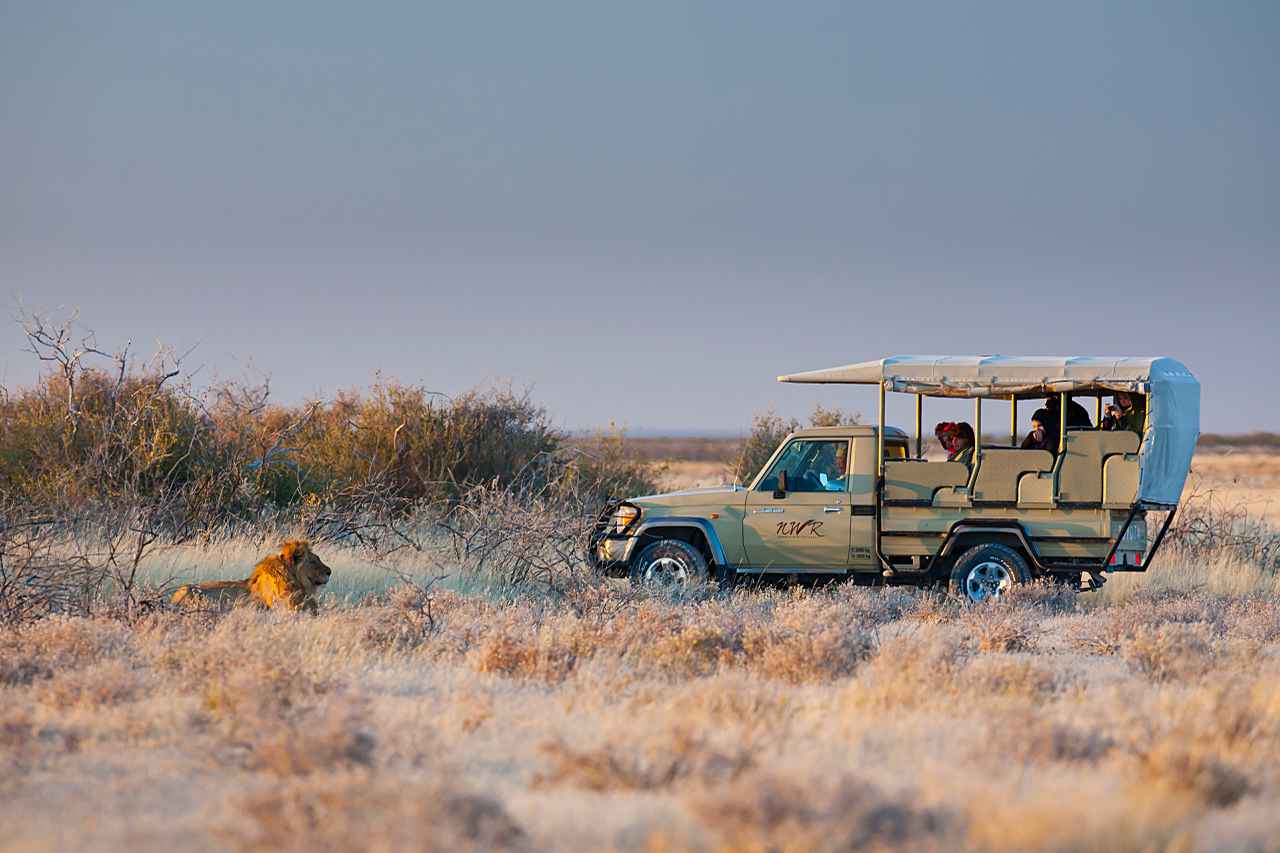
Namibia offers a wide variety of lodging options from exclusive hotels and luxury lodges to remote camping. General check-in times are at 14h00 and checkout time is at 10h00. Specific dietary requirements catered beforehand if notified in advance.
Namibia is home to the world’s largest population of free-roaming cheetahs
Namibia is one of only two countries in the world that has desert elephants
Sossusvlei Sand Dunes are some of the highest in the world. They are one of Namibia’s most impressive sights
The country gets its name from the Namib Desert one of the world’s oldest deserts
It contains one of the largest concentrations of rock art in Africa
It is also home to the second largest canyon in the world
The Skeleton Coast is the world’s biggest gravesite for sailors and ships
Hidden beneath the Kalahari Desert, the ‘Dragon’s Breath’ cave is the Earth’s largest (non-subglacial) underground lake located at least 100 m below the surface
Discovered in 1920 near Grootfontein, the Hoba meteorite is the world’s largest meteorite weighing at 54,000 kg, it has thought to fall to Earth around 80,000 years ago
The ghost town of Kolmanskop in Namibia was once one of the wealthiest places in the world. The former diamond-mining town had the first X-ray unit in the southern hemisphere
Namibia is one of the safest countries in Africa
The largest Namibia’s ethnic group is Ovambo, living in the northern part of the country
The San Bushmen of the Kalahari Desert considered the first people of Namibia. They traditionally followed the migratory patterns of the animals and still have no homeland. They speak a clicking language
Namibia has more than 300 days of sunshine per year